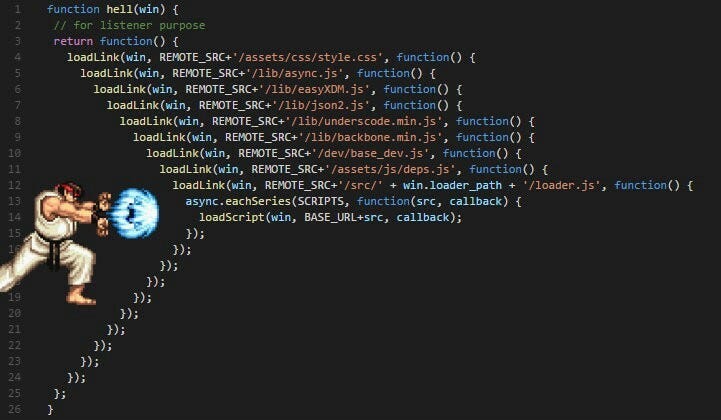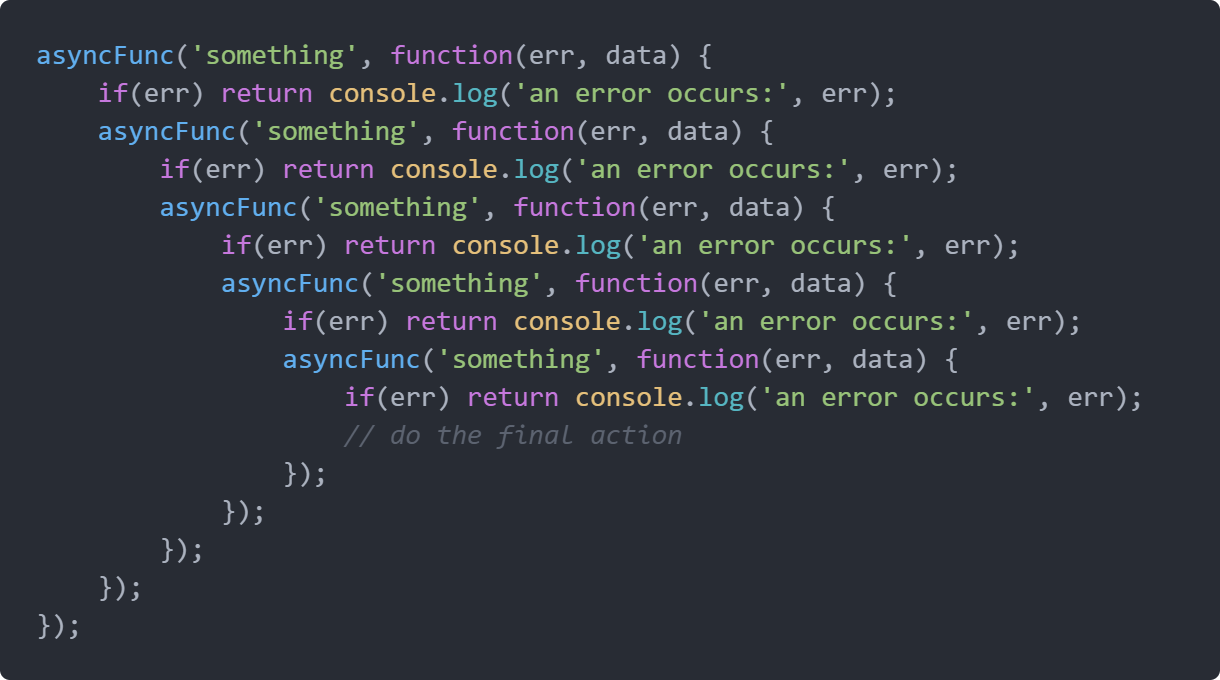Callback Hell: When Your Code Becomes a Pyramid of Doom
Learn how to overcome callback hell in JavaScript using Promises, Async/Await, and best practices for writing maintainable asynchronous code.
Introduction: The Complexity of Callback Hell
JavaScript developers frequently encounter a significant issue in asynchronous programming known as callback hell. This phenomenon arises when multiple asynchronous operations are nested within each other, leading to code that is difficult to read, debug, and maintain. The term "callback hell" aptly describes the convoluted structure that results from excessive callback nesting.
This article provides a comprehensive analysis of what callback hell is, why it occurs, and how to mitigate its effects through modern JavaScript techniques such as Promises, async/await, and best coding practices. The objective is to enable developers to write efficient, maintainable, and scalable JavaScript code.
What Causes “Callback Hell”
Callback hell refers to the excessive nesting of callback functions in JavaScript, particularly when handling multiple asynchronous operations. This pattern significantly reduces code readability and makes debugging increasingly challenging.
Causes
JavaScript is a single-threaded language, meaning it executes one operation at a time. To efficiently handle asynchronous tasks such as API requests, file I/O, and database interactions, JavaScript relies on callbacks. When multiple dependent asynchronous operations are implemented using callbacks, the code structure becomes deeply nested, forming what is commonly known as a pyramid of doom.
Indicators of Callback Hell
Increasing levels of indentation
Reduced code readability and maintainability
Difficulty in debugging
Repetitive and cumbersome error handling
Scalability issues as additional asynchronous operations are introduced
Illustration of Callback Hell
Consider the following example, where a user’s data is retrieved, followed by their orders, and then product details:
fetchUser(userId, (user) => {
fetchOrders(user, (orders) => {
fetchProductDetails(orders, (products) => {
processData(products, (result) => {
finalizeProcess(result, (response) => {
console.log("Final response:", response);
});
});
});
});
});This code is difficult to maintain due to its deeply nested structure. Error handling further exacerbates the complexity, making debugging cumbersome and inefficient.
Strategies to Address Callback Hell
1. Utilizing Promises
Promises offer a structured approach to handling asynchronous operations, thereby mitigating the challenges posed by callback hell. By returning a Promise, functions can execute in a more linear and readable format.
fetchUser(userId)
.then(fetchOrders)
.then(fetchProductDetails)
.then(processData)
.then(finalizeProcess)
.then(response => console.log("Final response:", response))
.catch(error => console.error("Error:", error));Advantages
Eliminates deeply nested callbacks
Enhances readability and maintainability
Centralized error handling using
.catch()
2. Implementing Async/Await
Introduced in ES2017, async/await enables developers to write asynchronous code that closely resembles synchronous execution.
async function getUserData(userId) {
try {
const user = await fetchUser(userId);
const orders = await fetchOrders(user);
const products = await fetchProductDetails(orders);
const result = await processData(products);
const response = await finalizeProcess(result);
console.log("Final response:", response);
} catch (error) {
console.error("Error:", error);
}
}
getUserData(userId);Advantages of Async/Await
Improved readability akin to synchronous code
Avoids deep nesting
Simplified error handling through
try/catchEnhanced debugging capability
3. Optimizing Multiple Asynchronous Operations with Promise.all
When multiple independent asynchronous operations must be executed concurrently, Promise.all() provides an efficient solution.
async function fetchAllData(userId) {
try {
const [user, orders, products] = await Promise.all([
fetchUser(userId),
fetchOrders(userId),
fetchProductDetails(userId)
]);
console.log({ user, orders, products });
} catch (error) {
console.error("Error fetching data:", error);
}
}Benefits
Executes multiple asynchronous operations in parallel
Improves performance
Simplifies code structure
Best Practices for Writing Maintainable Asynchronous Code
Utilize Promises or async/await instead of raw callbacks
Centralize error handling through
catchortry/catchUse
Promise.all()to manage concurrent asynchronous tasksModularize functions for improved readability and maintainability
Leverage third-party libraries such as async.js when necessary
Conclusion
Callback hell poses significant challenges in JavaScript development, but modern techniques such as Promises and Async/Await provide effective solutions. By employing these methods, developers can write cleaner, more scalable, and easier-to-debug asynchronous code.
Key Takeaways
Callback hell results from deeply nested asynchronous functions.
Promises provide a structured approach to flattening callbacks.
Async/Await enhances readability and simplifies error handling.
Promise.all()optimizes concurrent asynchronous tasks.



